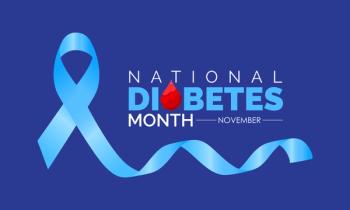
Progress Made in Diabetes Screening, Diagnosis
Rigorous screening guidelines can reduce the number of undiagnosed cases of diabetes.
The CDC
Although type 2 diabetes can be prevented, the rise in obesity has resulted in a simultaneous uptick in the condition.
While diabetes diagnoses have doubled over a 26-year period, undiagnosed cases dropped significantly, according to a new study published by the Annals of Internal Medicine.
The authors found that between 1988 and 2014, the diabetes incidence rate increased from 5.5% to 10.8%, but undiagnosed cases were reduced from 16.3% to 10.9%.
These results suggest that screening at primary care appointments has upped diagnoses and treatment, according to the stud authors.
Up to one-third of diabetes cases may be misdiagnosed, which causes a delay in treatment and irreversible organ damage. When diagnosed, diabetes can be managed with
“Understanding the proportion of diabetes cases that are actually undiagnosed, and who those patient groups are, is really critical to allocation of public health resources,” said lead author Elizabeth Selvin, PhD. “Our results suggest that targeted screening in these populations and increasing health coverage could help make sure that persons who have diabetes receive a diagnosis and get the appropriate treatment that they need.”
Data from a total of 17,045 patients participating in the National Health and Nutrition Examination Surveys III conducted from 1988 to 2014 were included in the study. The authors investigated undiagnosed cases of diabetes, which were not confirmed by blood tests—a guideline from the American Diabetes Association (ADA).
The authors discovered that a majority of patients with undiagnosed diabetes were overweight, obese, an ethnic minority, uninsured, and did not have a recent healthcare visit, according to the study.
Notably, the number of undiagnosed patients decreased over time, which likely was the result of increased screening, according to the study.
The authors said that the results identify the populations that should be targeted by diabetes screening programs, which could further reduce the number of undiagnosed cases. Factors such as age and body mass index are the most significant diabetes risk factors and the results confirm current screening guidelines, the study noted.
The authors said that the results suggest that getting individuals to see their healthcare providers remains a hurdle to overcome, according to the study.
“If we’re thinking about screening programs, these findings suggest that healthcare providers are doing a good job at diagnosing people when they’re coming in contact with the healthcare system,” Dr Selvin said. “It’s those people who are not coming in contact with the healthcare system that need to be a focus of our efforts to ensure cases of diabetes are not missed.”
Newsletter
Stay informed on drug updates, treatment guidelines, and pharmacy practice trends—subscribe to Pharmacy Times for weekly clinical insights.


















































































































































































































